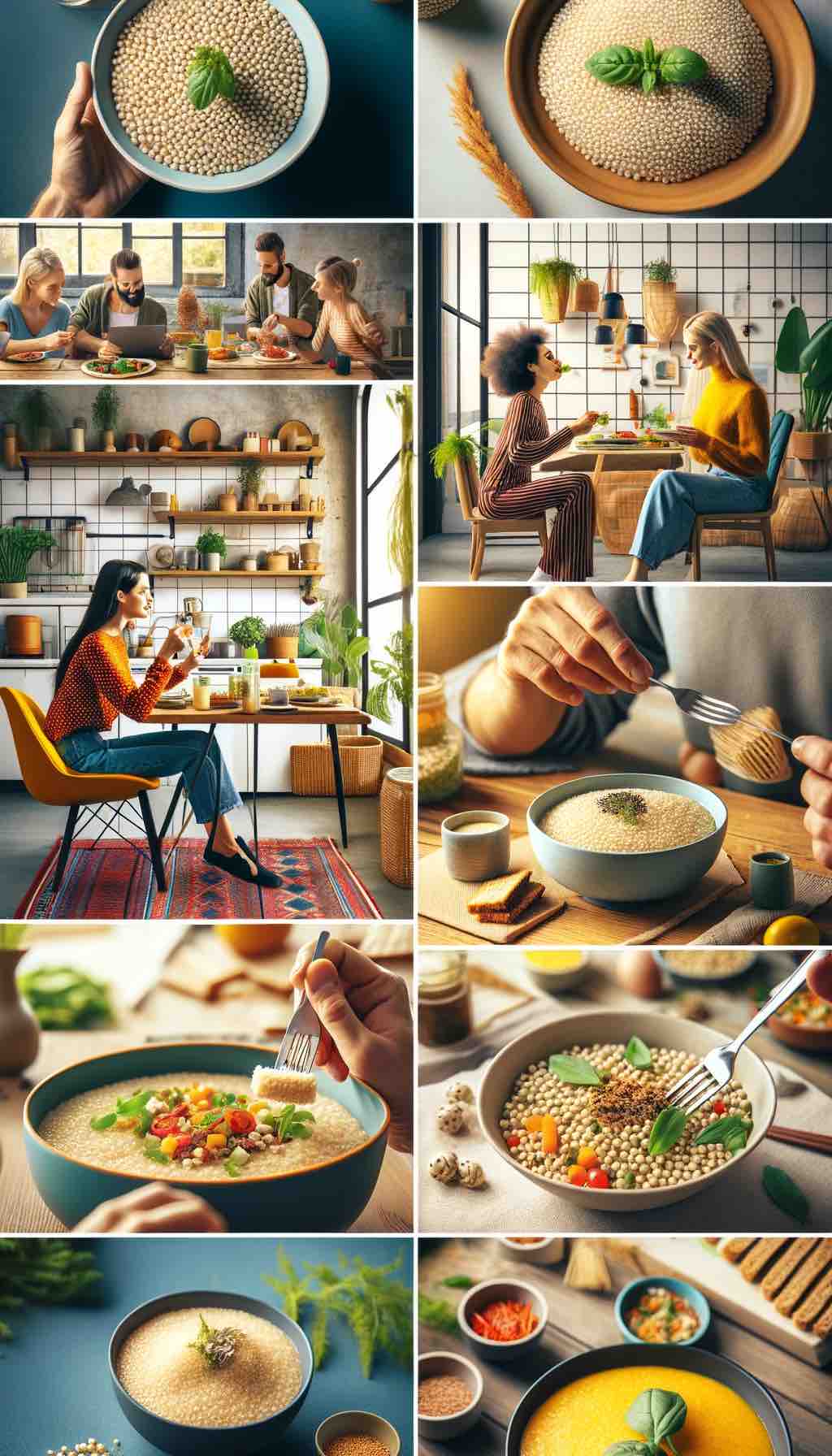
Welcome to the world of millets, a treasure trove of health benefits waiting to be unlocked! These tiny grains, though small in size, pack a mighty punch in terms of nutritional value, especially when it comes to boosting your digestive health. Journey with me as we explore the magic of millets and how they can transform your wellness routine.
The Fiber Fable: Millets at the Heart of Digestive Health
Millets are champions of dietary fiber, essential for keeping our digestive system running smoothly. Each millet type brings its unique profile of soluble and insoluble fiber, creating a perfect symphony for gut health.
- Soluble Fiber: This is where the magic happens. Soluble fiber in millets forms a gel-like substance, slowing digestion, stabilizing blood sugar levels, and even reducing cholesterol. It’s like having a natural regulator inside your body, ensuring everything moves at the right pace.
- Insoluble Fiber: Think of this as your internal broom, sweeping through the digestive tract. Insoluble fiber in millets adds bulk to your stool, preventing constipation and ensuring regular bowel movements. It’s nature’s way of keeping things clean and tidy in there.
Nutritional Powerhouses: Beyond Just Fiber
Millets are not just about fiber; they are nutritional powerhouses. Each type of millet, from finger millet to foxtail millet, boasts a rich array of vitamins, minerals, and antioxidants. These nutrients work in harmony to enhance your overall health, contributing far beyond just digestive wellness.
- Minerals and Vitamins Galore: Imagine a grain so small yet so mighty that it can supply your body with essential minerals like calcium, iron, and zinc. Finger millet, for instance, stands out for its high calcium content – a boon for bone health.
- Antioxidant Arena: Millets are like the unsung heroes in the fight against oxidative stress. Rich in antioxidants, they protect your body from harmful free radicals, reducing the risk of chronic diseases.
Culinary Creations: Millets in Your Meals
Incorporating millets into your diet is not just healthy; it’s a culinary adventure. Their versatility makes them a perfect fit for any meal, from breakfast porridges to savory dinner options. Here’s how you can make millets a staple in your kitchen:
- Breakfast Bowls to Energize Your Day: Start your morning with a warm bowl of millet porridge. Top it with your favorite fruits, a sprinkle of nuts, and a dash of cinnamon for a breakfast that’s both nutritious and delicious.
- Savory Suppers: Replace rice with millets in your pilafs, stir-fries, or even as a side dish. Their nutty flavor and satisfying texture make them an excellent complement to any main course.
Embracing Millets: A Step Towards Better Health
Adopting millets into your daily diet is more than just a dietary change; it’s a lifestyle choice. By choosing millets, you’re not only enhancing your digestive health but also contributing to better weight management, blood sugar control, and overall well-being.
Conclusion: The Millet Marvel
Millets are more than just grains; they are a testament to the power of nature’s simplicity. As we journey towards better health, let’s not forget these small yet mighty grains that hold the key to improved digestion and overall wellness. Embrace the marvel of millets and experience the transformation in your health journey.
10 FAQs About Millets and Digestive Health
- What makes millets good for digestion? Millets are rich in dietary fiber, which aids in regulating bowel movements and preventing constipation. Their high fiber content also helps maintain a healthy gut microbiome.
- Are millets gluten-free? Yes, millets are naturally gluten-free, making them a great choice for those with gluten sensitivities or celiac disease.
- Can millets help in weight management? Definitely. The high fiber content in millets promotes a feeling of fullness, reducing overeating and aiding in weight management.
- What types of fiber are found in millets? Millets contain both soluble and insoluble fibers. Soluble fiber helps in regulating blood sugar and cholesterol, while insoluble fiber aids in digestion and regular bowel movements.
- How can I incorporate millets into my diet? Millets can be used in various dishes like porridges, salads, and as a rice substitute in pilafs or stir-fries.
- Are millets beneficial for people with diabetes? Yes, the soluble fiber in millets can help regulate blood sugar levels, making them a suitable food choice for diabetics.
- Do millets offer any other health benefits? Apart from digestive health, millets are beneficial for heart health, blood sugar control, and provide essential nutrients like vitamins and minerals.
- How do millets compare to other grains in terms of nutritional value? Millets are generally higher in protein, fiber, and essential nutrients compared to many other grains, making them a more nutritious choice.
- Can children and elderly consume millets? Yes, millets are safe and beneficial for people of all ages, including children and the elderly, due to their high nutritional content and digestibility.
- Are there any risks associated with consuming millets? Millets are safe for most people, but as with any food, it’s important to consume them in moderation. People with thyroid conditions should consult with a healthcare provider due to millets’ goitrogenic properties.
Blog Tags
Millets, Digestive Health, Gluten-Free Diet, Weight Management, High Fiber Diet, Diabetic Friendly Foods, Nutritional Benefits, Heart Health, Healthy Eating, Plant-Based Protein











